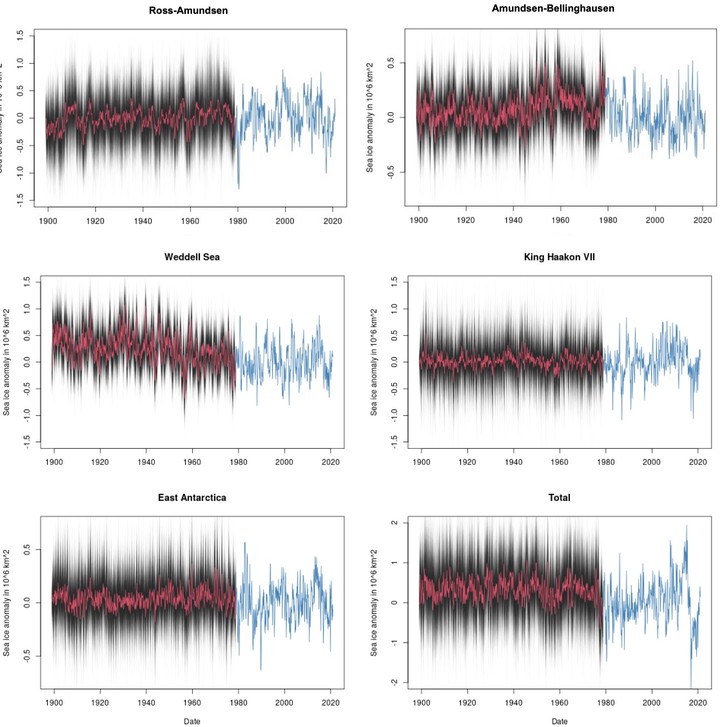
Abstract
Antarctic sea ice, a key component in the complex Antarctic climate system, is an important driver and indicator of the global climate. In the relatively short satellite-observed period from 1979 to 2022 the sea ice extent has continuously increased (contrasting a major decrease in Arctic sea ice) up to a dramatic decrease between 2014 and 2017. Recent years have seen record sea ice lows in February 2022 and February 2023.
We use a statistical ensemble reconstruction of Antarctic sea ice to put the observed changes into the historical context of the entire 20th century. We propose a seasonal Vector Auto-Regressive Moving Average (VARMA) model fit in a Bayesian framework using regularized horseshoe priors on the regression coefficients to create a stochastic ensemble reconstruction of monthly Antarctic Sea ice extent from 1900-1979.
This novel model produces a set of 2500 plausible sea ice extent reconstructions for the sea ice by sector that incorporate the autocorrelation structure of sea ice over time as well as the dependence of sea ice between the sectors. These fully observed reconstructions exhibit plausible month-to-month changes in reconstructed sea ice as well as plausible interactions between the sectors and the total. We reconstruct an overall higher sea ice extent earlier in the 20th century with a relatively sharp decline in the 1970s.
These trends agree well with previous reconstructions of Antarctic sea ice based on ice core data, whaling locations, and climatological data, as well as early satellite observations in the reconstruction period.